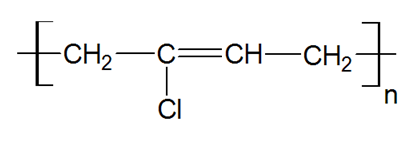What is Chloroprene Rubber?
Put simply, Chloroprene Rubber is a type of foamed synthetic rubber (Also called: neoprene or polychloroprene). In technical terms,Chloroprene Rubber is a t ype of polymer (a large molecule composed of repeating structural units) known as polychloroprene that is produced by the polymerization (chemical reaction) of chloroprene (an organic compound of colorless liquid with the formula CH2=CCl-CH=CH2). Chloroprene is the monomer in this process (a molecule that binds chemically to other molecules to form a polymer).Chloroprene Rubber: A brief history
During the 1920s the increasing demand for natural rubber led to higher and higher prices, sparking a search for an equivalent synthetic rubber. It was during 1930s that a chemist in DuPont’s fundamental research group created: neoprene. The 1960s also saw a new type of neoprene pioneered by Japan’s Yamamoto Corporation. Instead of traditional oil-based neoprene, Yamamoto developed special technology to convert the calcium carbonate from limestone into chloroprene rubber chips, producing limestone neoprene. Its two properties of oils and chemical resistance led to its being used extensively in the automotive industry for gaskets, belting and hoses (although today more sophisticated elastomers are competing successfully for these applications) as well as for lining tanks which would contain strong organic and inorganic acids.Chloroprene Rubber: Properties
 Chloroprene Rubber (CR), exhibits good chemical stability and maintains flexibility over a wide temperature range. Chloroprene Rubber is sold either as solid rubber or in latex form, and is used in a wide variety of applications, such as liquid and sheet applied elastomeric membranes or flashings, and automotive fan belts.The chlorine in the polymer reduces the reactivity to many oxidizing agents.
Chloroprene rubber typically displays good resistance to ozone cracking, heat aging and to chemical attack. In fact, chloroprene is one of the few rubbers that are self-extinguishing. It also gives excellent rubber-to-metal bonds. Its mechanical properties are generally inferior to those of natural rubber but it has superior chemical resistance.
Chloroprene Rubber (CR), exhibits good chemical stability and maintains flexibility over a wide temperature range. Chloroprene Rubber is sold either as solid rubber or in latex form, and is used in a wide variety of applications, such as liquid and sheet applied elastomeric membranes or flashings, and automotive fan belts.The chlorine in the polymer reduces the reactivity to many oxidizing agents.
Chloroprene rubber typically displays good resistance to ozone cracking, heat aging and to chemical attack. In fact, chloroprene is one of the few rubbers that are self-extinguishing. It also gives excellent rubber-to-metal bonds. Its mechanical properties are generally inferior to those of natural rubber but it has superior chemical resistance. 


